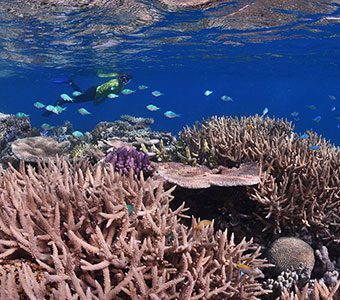The Bends, also known as decompression sickness (DCS) occur when nitrogen bubbles form in the blood, often causing severe joint pain. The common name “The Bends” comes from an affected person doubling (bending) overdue to the intense pain of the condition.
Ascending too quickly and not following recreational diving guidelines are two main causes of decompression sickness, however, several other factors may contribute to individual susceptibility. Here are the top 5 factors that increase your risk of bends.
1. Exertion
The timing and intensity of exercise (also known as workload) during a dive can substantially affect a diver’s risk of DCS. Exertion increases blood flow and its gas carrying capacity. Consequently, exertion during descent and the deepest phase of a dive increases the amount of gas dissolved in tissues and the subsequent decompression stress. Mild exercise during decompression speeds up off-gassing. Exertion immediately following a dive can stimulate bubble formation and increase the likelihood of bubbles passing through the lungs without being filtered out of the circulation.
Where possible, keep exertion to a minimum during the deepest part of a dive, and after diving, avoid exercise as long as possible. If exertion is unavoidable, dive conservatively to minimise risk.
2. Thermal Stress
A diver’s body temperature can influence decompression risk. A warmer body absorbs more inert gas and releases it more readily. Conversely, a cooler body absorbs less gas during descent and releases less during ascent.
Divers using protective suits without active heating should avoid long exposure that may chill them toward the end of the dive. When using heated garments, a diver should stay comfortably cool at depth and warm during decompression. Staying comfortably warm during decompression and after diving promotes inert gas elimination and reduces the risk of DCS. However, attempts to warm up too quickly after a dive, like taking a hot shower or bath may provoke decompression illness.
3. Post-dive Air Travel
Flying after diving increases decompression stress because the pressure in an aircraft cabin is lower than atmospheric pressure on the ground. The recommended guidelines for flying after diving are as follows:
- After a single no-decompression dive, a minimum preflight surface interval of 12 hours is suggested.
- After multiple dives per day or multiple days of diving, a minimum preflight surface interval of 18 hours is suggested.
- After dives requiring decompression stops, a preflight surface interval substantially longer than 24 hours is considered prudent.
Adhering to these guidelines can reduce your risk but offers no guarantee against DCS. Observing surface intervals longer than the recommended minimums helps to further reduce a diver’s risk.
4. Medical and Physical Fitness
Poor health and physical fitness can compromise individual safety when diving and may increase the risk of DCS. Regular exercise improves fitness and cardiovascular health, which translates into the ability to cope with emergencies and mitigates the risk of DCS. Adults need two types of regular activity to maintain or improve their health: aerobics and strength training.
5. Breathing Gas Mixture
The breathing gas mixture a diver uses can play a role in the development of DCS. Enriched Air Nitrox (EAN) includes an increased percentage of oxygen and, therefore, a reduced percentage of nitrogen. When diving Nitrox and using the decompression schedule for air diving, the risk of DCS is reduced. The higher oxygen content of Nitrox comes with an increased risk of developing oxygen toxicity if a safe depth limit is exceeded.
Additional DCS risk factors include:
- State of Hydration
- Carbon Dioxide Level
- Patent Foramen Ovale
Note: Diving with Nitrox requires special training. Contact your local dive centre or resort to learn more.
While individual susceptibility to DCS may vary, every diver can reduce their risk of decompression sickness by ascending slowly from every dive and following recreational diving guidelines.



